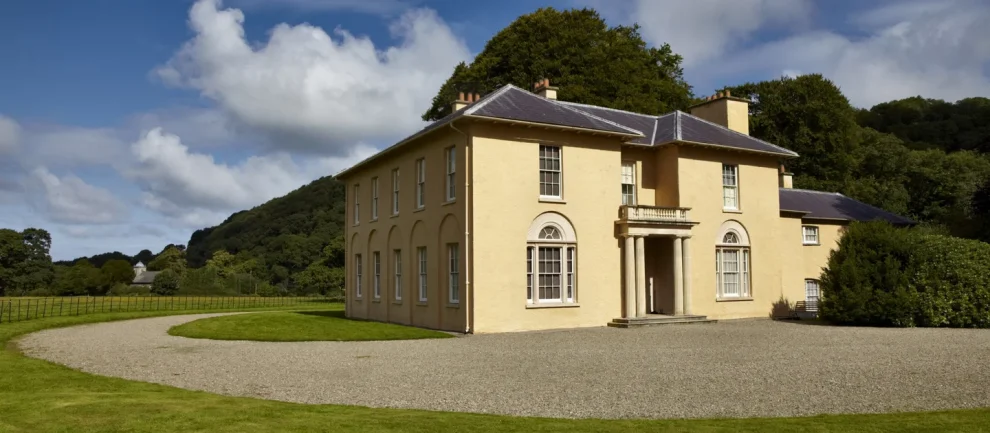A COLLECTION of historic textiles, many of which have never been on display to the public before can now be seen in a new exhibition called ‘Pwyth a Gweu | Stitch and Weave’ at Llanerchaeron, Carmarthenshire.
Tapestries, woven textiles, and embroidery dating back to the17th-19th centuries have been hand selected from the Pamela Ward Collection. Each item reveals Pamela’s broad interest in textiles, sharing a variety of woven styles, historical periods, and embellishment techniques.
Pamela Ward (1908–94) was an avid and eclectic collector of collectables and ephemera. In the 1960s she opened an antique shop in Knightsbridge, London as a hobby where she sold ‘little things she liked’. After her death in 1994, her entire collection of over 5,000 objects, along with many of her personal possessions and documents were donated to The National Trust at Llanerchaeron.
A highlight of the exhibition is the first chance to see a fragment from a 300-year-old tapestry in the collection, called ‘Diogenes discarding his cup’ from a series called ‘The Life of Diogenes’. The tapestry is thought to originate from London’s famous Mortlake Tapestry Works during the Renaissance period.
A small number of ‘Diogenes’ tapestries survive in National Trust collections, including Chirk Castle in Wrexham. The fragment on display at Llanerchaeron is unique in that it is embroidered with the initials IR, which may stand for Jan Rosset, who worked at Mortlake.
Ten unique pieces feature in the exhibition, including a tiny hand-stitched child’s bodice revealing how recycling and reusing clothing has been commonplace throughout history. Crafted from silk, the fine tamboured embroidered fabric has been pieced together in such a way that suggests the child’s bodice may have been repurposed from another garment such as a gentleman’s waistcoat.
A delicately patterned panel from an 18th century dress, chenille needlework, finely woven wool in paisley designs, and richly coloured Victorian crewel embroidery can also be seen on display. The origin of the word ‘crewel’ may be from an old Welsh word that described the curl in a single strand of wool.
National Trust Cymru Conservator, Clare Stoughton-Harris, said:
‘It’s a fantastic opportunity to see these intriguing historic textiles from the Pamela Ward collection on display at Llanerchaeron, some of which have never been on show to the public before. Ten very distinct pieces have been hand-picked from 5000 objects in the collection, and the stories embedded in their fabric are as beautiful as the craftsmanship of their making’.
Some of Pamela’s personal items also feature in the exhibition, including carefully preserved newspaper patterns from the 1940s for needlecraft, pincushions, and lavender bags. Visitors are also invited to try their hand at weaving, stitching and embroidery with mini weaving looms and stitching cards.
Pwyth a Gweu | Stitch and Weave is open on the top floor of the Georgian villa at Llanercharon until 5 November 2023. The exhibition is free, usual admission applies. Llanerchaerion is open daily.
Find out more here: https://www.nationaltrust.org.uk/visit/wales/llanerchaeron

















